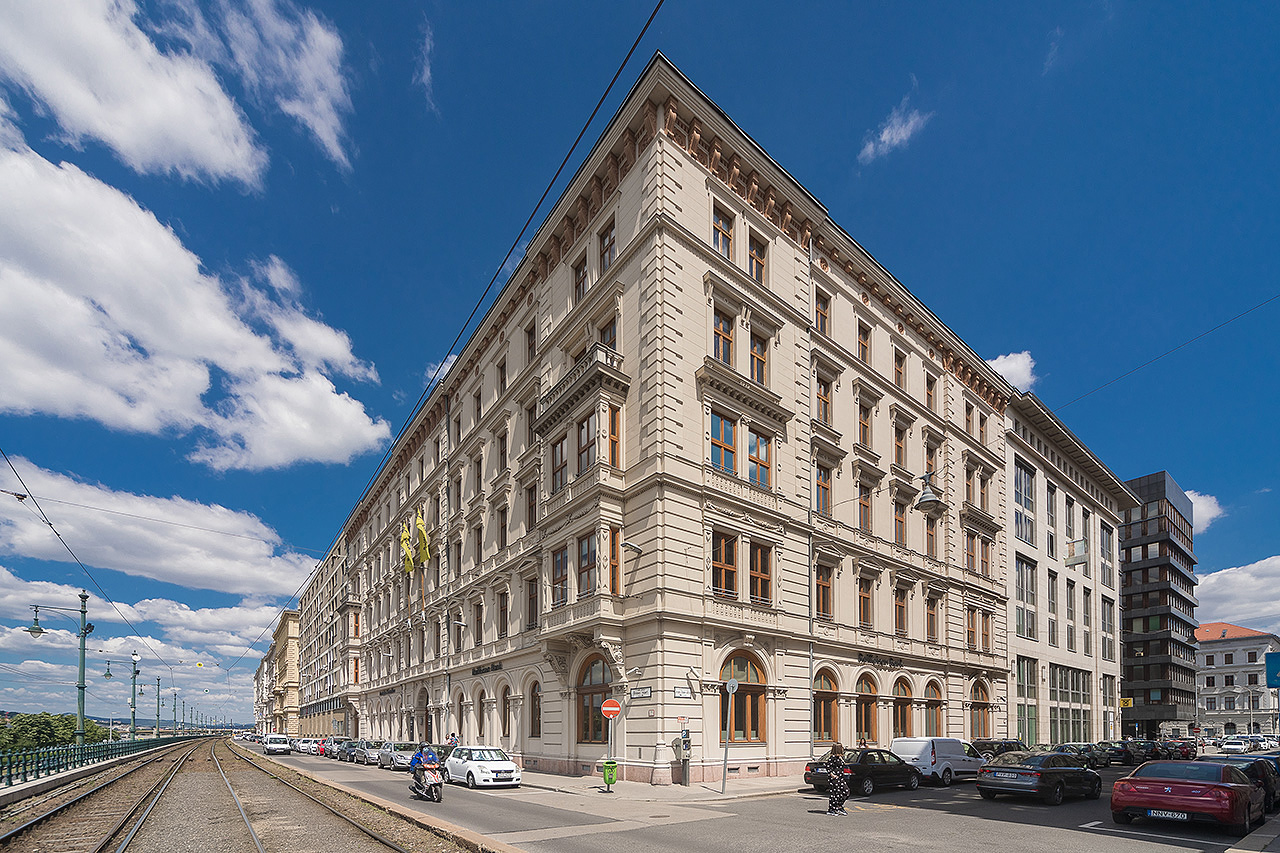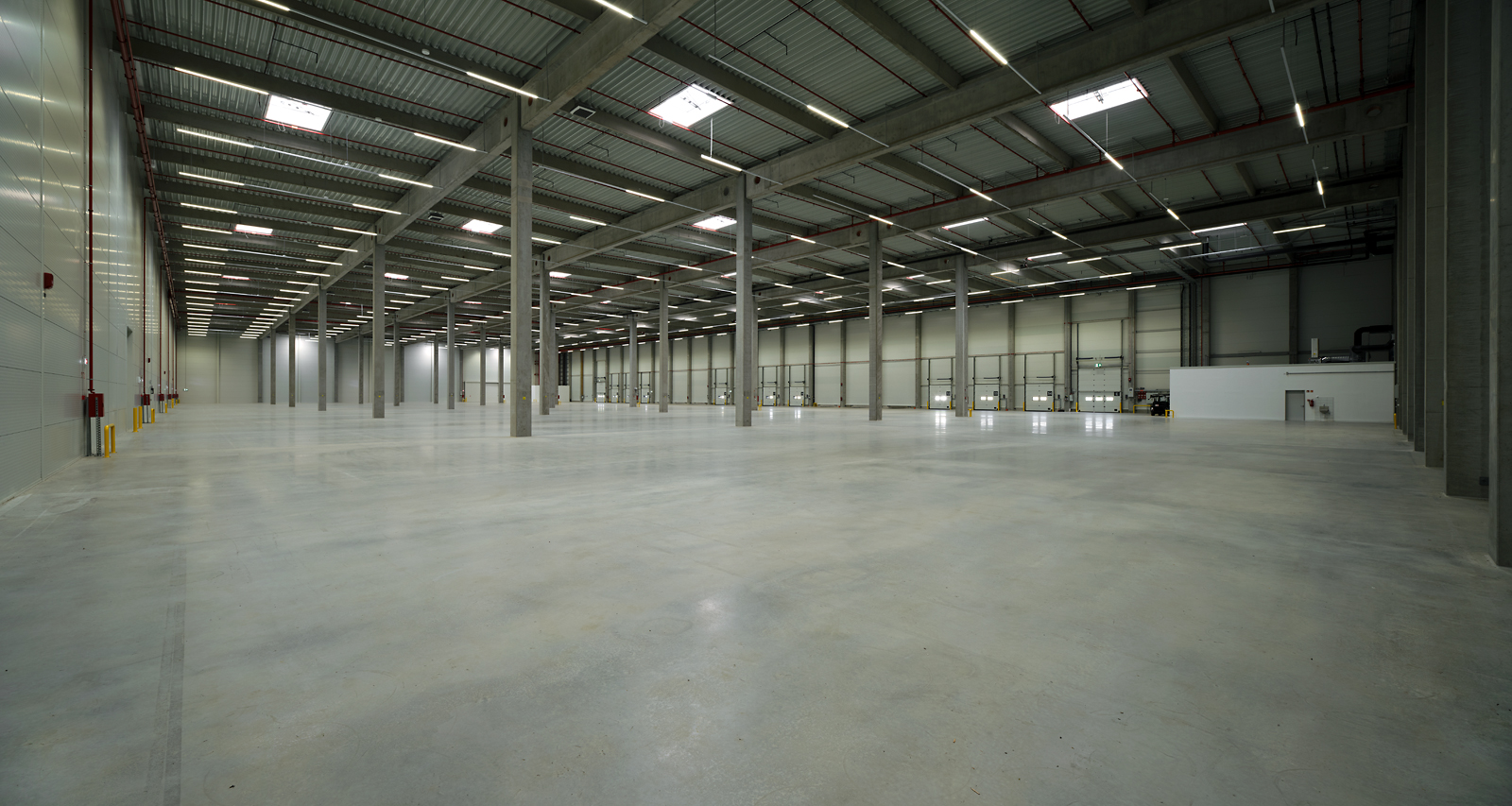Property Sustainability Integrating Into Wider Regularity Systems

Academia (formerly known as Akadémia Business Center).
With the perceived growing need for third-party accountability, commercial property sustainability accreditation systems are already being designed for various project types, and not only the “classical” office, retail and industrial sectors.
“They are already positive examples about masterplan level certifications [BREEAM Communities standard] for larger scaled urban development projects – for example, Liget Budapest, or Agora Budapest – where not just the building level sustainability accreditation is within the focus, but the whole project’s sustainable integration into an existing urban network is analyzed, and a wide range of stakeholders are consulted as well,” explains Zsombor Barta, president of the Hungarian Green Building Council (HuGBC).
“But beyond that, we also see that the new EU taxonomy regulation, which sets new sector-specific standards regarding sustainable market operations, is also being heavily considered by different stakeholders, including the classical green building rating schemes, which also adopts the EU Taxonomy-related requirements within their own scheme. EU Taxonomy, ESG benchmarking, or BREEAM / LEED ratings are all standards focusing on the real estate sector in general and are setting holistic sustainability frameworks, which are not sector-specific,” he adds.
The HuGBC president says the EU taxonomy focuses on an ambitious pathway towards a net-zero EU by 2050. To achieve this ambitious goal, the real estate sector needs to switch to more energy-efficient and therefore more sustainable buildings, Barta argues.
This energy efficiency focus is currently also being introduced to the updated BREEAM certification framework to harmonize with the new EU taxonomy regulation.
Must do More
“Generally speaking, we need to do much more than until now. Nice green building certification pledges are not enough anymore. We need to have an ambitious strategy for net-zero operations, which clearly shows the pathway to that, and this pathway needs to be continuously monitored; concrete emission reduction measures need to be taken and reported. This is something new, as this was not necessarily the case with the third-party certifications until now,” he adds.
Barta believes that sustainability should already significantly impact wise and thoughtful architects and designers.
“If this was not the case until now, this is already a huge gap. However, in the very near future, sustainable design and energy-efficient measures will play an even bigger role, as the financial sector is also connecting their products to actual sustainable measures,” he points out.
“ESG benchmarking or the EU taxonomy are two frequently used frames, which are becoming more important. If the fulfillment of these frameworks is essential for receiving a beneficial financial product, then the designers need to act and adopt these requirements very quickly. A lot of innovative ideas and progressive thinking is needed to actively reduce the building’s emissions, by providing at the same time a high level of liveability and comfort,” he concludes.
For much more news from the MIPIM event, see MIPIM 2022 Sees Return to Large-scale Expo Events on page 5.
ESG Issues now ‘Unavoidable Factors’
Sustainability considerations and environmental, social and governance (ESG) matters are now unavoidable factors for real estate investors that presuppose planning and future responsibility, comments Csaba Zeley, managing director at ConvergenCE. “ESG, as an approach, has already become paramount at the beginning of the investment, even in Hungary, as it is also decisive at the exit, determining the marketability of the given property. When ConvergenCE, in partnership with Europa Capital, recently acquired Academia (formerly known as Akadémia Business Center), we were committed to making the fullest possible use of the ESG framework during the refurbishment and management of the project and aim for net-zero emissions,” he said.
Hexum Group to Build Solar Park
Hexum group, owned by the Hungarian Hydrocarbon Stockpiling Association (MSZKSZ), will build a HUF 15 billion (USD 44.25 million) solar park in Sümeg (170 km southwest of Budapest). With a capacity of 25 megawatts (MW), the park is scheduled to be completed by spring 2024, government commissioner Tibor Navracsics said. It will also have a storage capacity of 6 MW, MSZKSZ chief executive Béla Bártfai said. (source: MTI)
Solaris Hydrogen bus Being Tested
Arrivabus Kft., the service provider of the Budapest Transport Center (BKK), has been testing a hydrogen-powered Solaris bus, according to profitline.hu. The vehicle, which produces water instead of exhaust gas, was run on bus line 105 for three days. Passengers could try the bus for free, BKK stated. It added that the Urbino 12 hydrogen-powered bus, powered by Solaris, a “revolutionary new” technology, is 15 meters long and has 37 seats.
ESG, Sustainability Emphasized at MIPIM
More than ever, the consensus across the MIPIM property expo in Cannes this month was how the industry could tackle the risks that possible outcomes are embedded into real estate decision making, says Guy Grainger, global head of sustainability and ESG at JLL. This reflects how broader environmental concerns are an integral component of issues in the construction, property and investment industries. Most debates and roundtables at the event reflected on the reciprocal impact of sustainability and ESG issues on the real estate markets and wider society.
House of Music Hungary Wins Expo Award
The House of Music in City Park, an integral part of the government-backed urban regeneration Liget Budapest Project, has won the Special Jury Prize at the annual MIPIM international property Expo in Cannes. The building, designed by the Japanese architect Sou Fujimoto was noted for the aspects of sustainability, aesthetics and visitor experience in the jury assessment. The architect was previously showcased at the Budapest-Hungary stand in MIPIM.
This article was first published in the Budapest Business Journal print issue of March 25, 2022.
SUPPORT THE BUDAPEST BUSINESS JOURNAL
Producing journalism that is worthy of the name is a costly business. For 27 years, the publishers, editors and reporters of the Budapest Business Journal have striven to bring you business news that works, information that you can trust, that is factual, accurate and presented without fear or favor.
Newspaper organizations across the globe have struggled to find a business model that allows them to continue to excel, without compromising their ability to perform. Most recently, some have experimented with the idea of involving their most important stakeholders, their readers.
We would like to offer that same opportunity to our readers. We would like to invite you to help us deliver the quality business journalism you require. Hit our Support the BBJ button and you can choose the how much and how often you send us your contributions.









